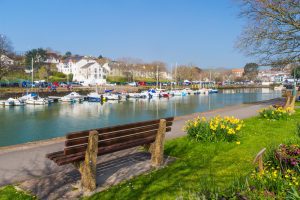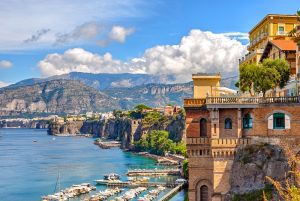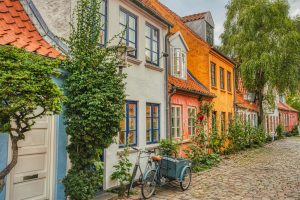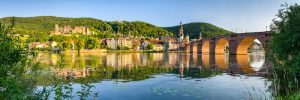If all you’ve ever seen or considered living is in London, then you haven’t experienced the UK in all its splendor.
Think about picturesque landscapes and gardens along with amazingly fresh country air – things you’d be missing in a London flat.
There are so many cobblestone walkways and unique home designs to enjoy, not to mention, well-laid-out villages and idyllic seaside towns.
We’ll let you see for yourself by looking through the 30 Best Villages & Small Towns to Live in the UK.
Table of Contents
1. Bibury, England

Exemplary English towns mean countrified scenes of tiny cottages in rolling green hills. That is the essence of Bibury. Arlington Row, a particularly picturesque section of protected houses in the town, features on the inside cover of all UK passports.
This town is a hub for countryside walks and tearooms and strolling around Bibury and falling in love with the place is the primary pastime. Located in the Cotswolds, a region renowned for quaint towns and lovely countryside, it doesn’t get more charming than this quiet slice of pastoral England.
2. Hawkshead, England
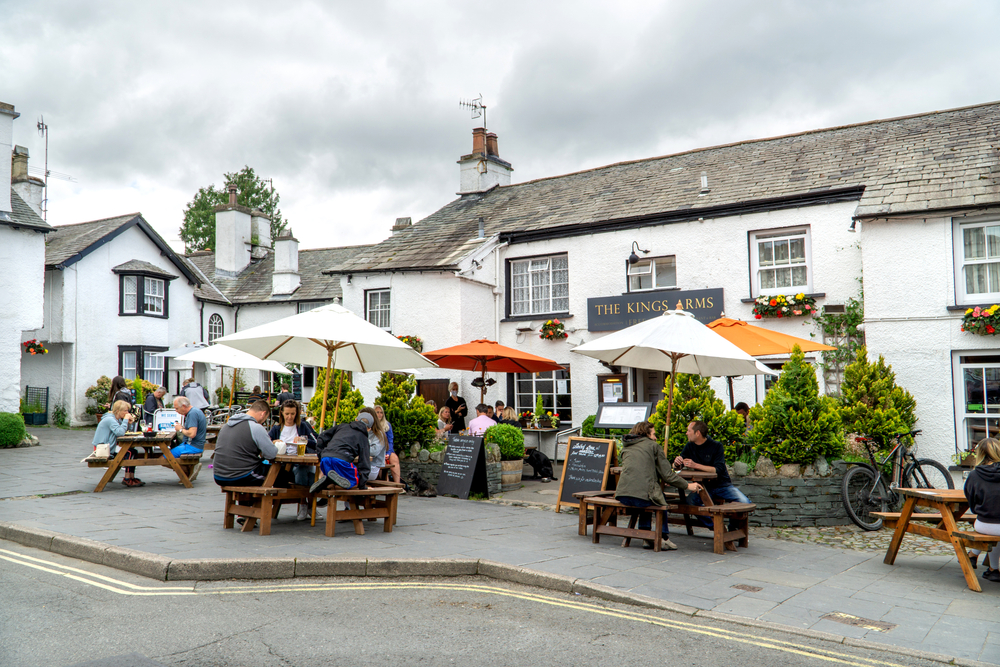
Carefully preserved Hawkshead was once home to William Wordsworth, who described it in his poem The Prelude. Beatrix Potter also lived here, and her former residence is now open to the public – an excellent opportunity to feel snug inside an authentic English cottage.
Hawkshead is a tourist mecca not only because of its whitewashed cottages, old pubs, and cobbled streets but also for its location: the Lake District. A beautiful English area famous for its lakes, falls, and forests, hiking in the English countryside is supremely idyllic here.
3. Castle Combe, England
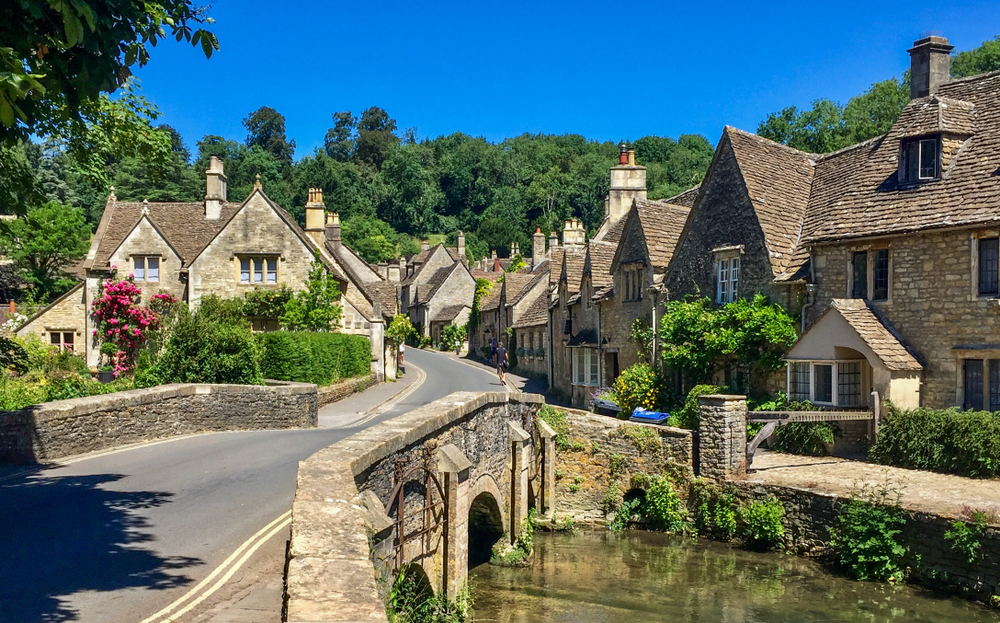
Stepping foot in Castle Combe is like being transported back in time – or into the pages of a book. No one can argue its reputation as “the prettiest town in England.”
Bursting with charm in the form of perfectly preserved houses built with honey-colored Cotswold stone and narrow laneways lined with fresh blooms, Castle Combe also tops the list of the best villages in the Cotswolds.
You’ll find beauty all over this notable town; the aged water pump huddled behind a garden in the center of the village and stone market cross are just a few.
Then there are the hallowed walls of St. Andrew’s Church, where there’s never a lack of something lovely to photograph. The church is also where you’ll find the faceless but functional medieval Castle Combe Clock.
As you walk through this tiny paradise, be sure to buy fresh fruits, veggies, herbs, or baked goods from the make-shift markets set up outside people’s homes, and don’t miss a meal in one of the town’s restaurants.
The White Hart has been around since the 14th century and offers service (and traditional English fare) with a smile. On a nice day, you can enjoy your meal on a picnic table outside.
Filmmakers often use Castle Combe as a backdrop for movies and television shows (you may recognize its charming town center from Steven Spielberg’s War Horse).
It’s a gem that has become a hot spot for tourists. Aim to get here early or visit off-season if you’re hoping for a quieter experience.
4. Bakewell, England
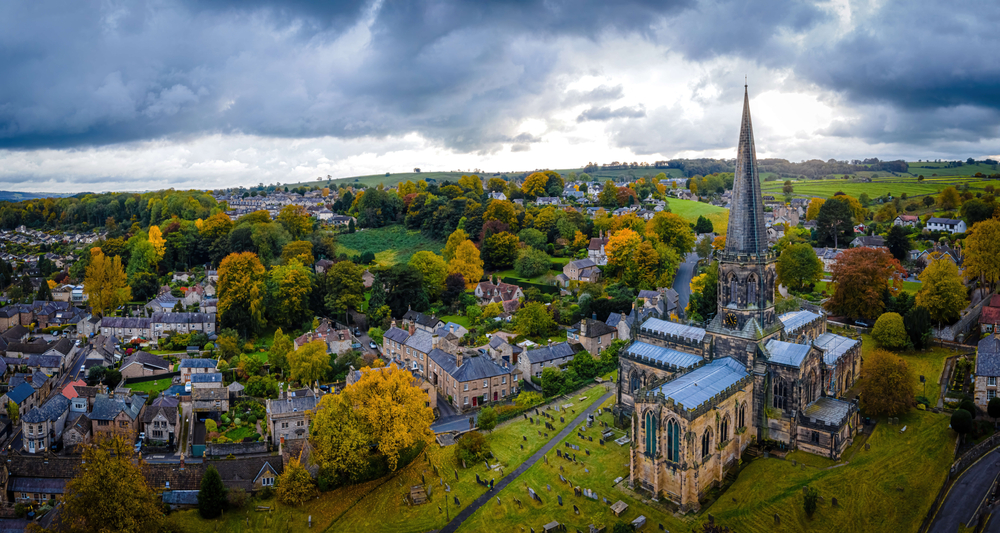
Stone buildings straight out of a storybook populate this northern town, and its name is known by most due to its association with its most famous product: Bakewell pudding, a pastry casing with a bottom layer of jam, and a frangipane filling.
Aside from food, and like many in England, the town is ancient, dating back to Anglo-Saxon times. The top-tier listed Bakewell Parish Church started in 920 AD. Located in the heart of the Derbyshire Dales, the surrounding area comprises well-trod hiking trails.
5. Painswick, England
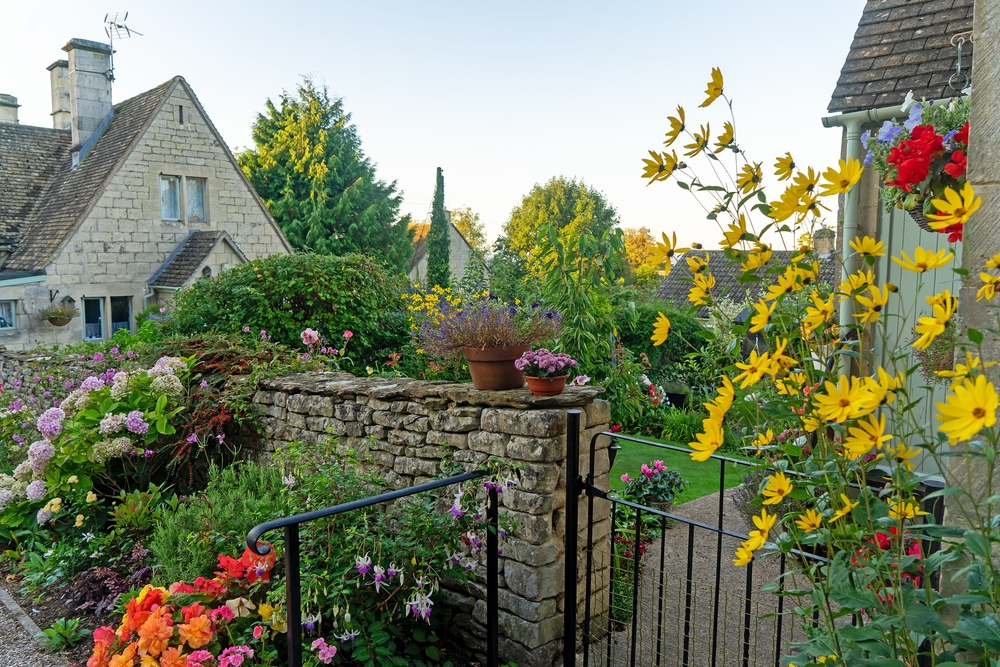
Ever wanted to live in a fairy tale? Visit Painswick. When you stroll through the St. Mary’s churchyard, its design and beauty will blow your mind. Fitted with 99 dramatic yew trees (folklore claims the 100th won’t grow), the grounds will give you the feeling of being in another world.
Run through the tree tunnel, marvel at the tabletop tombs, and search the church tower for signs of the Civil War. If you happen to be here in time for a service, stick around; the locals are friendly and welcoming, with exciting tales (and sometimes tea and biscuits) to share.
You can immerse yourself in the spiraling roadways bordered by rustic English dwellings. Similar to Castle Combe, these residences are made of Cotswold stone. If you look closely enough, you’ll be able to find remnants of Painswick’s past as a wool town, including donkey doors on Bisley Street.
Don’t miss Rococo Gardens, which offers spectacular views of the countryside in addition to its lovely gardens.
6. Berwick-upon-Tweed, England
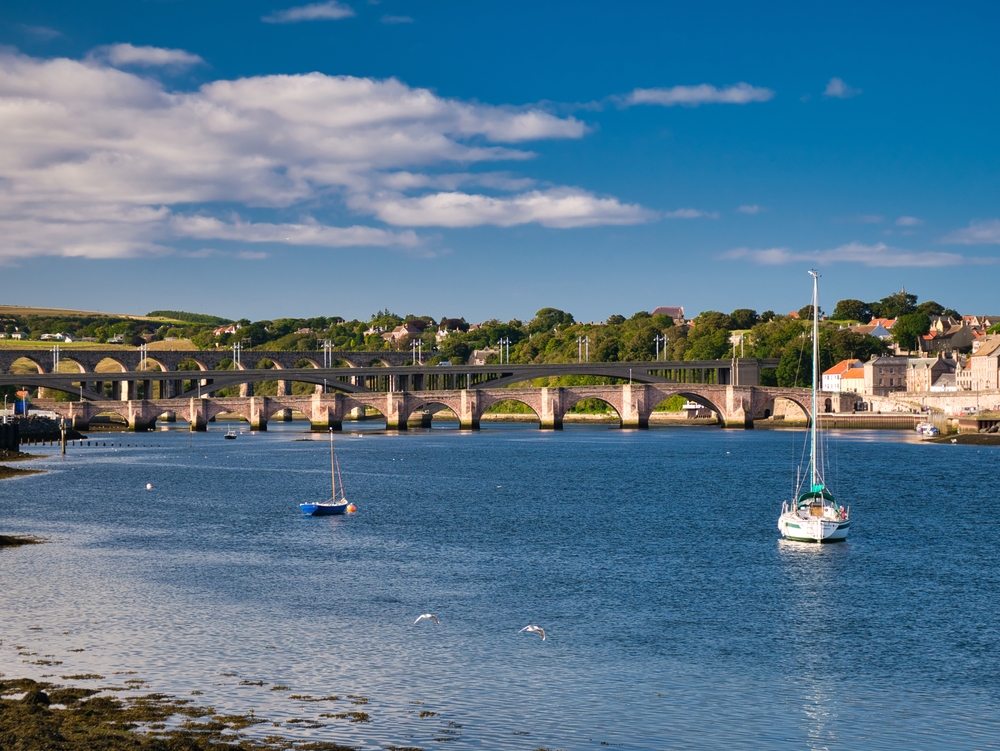
This is the most fought-over town in European history: it changed hands fourteen times from England to Scotland between 1174 and 1482. Eventually, England prevailed.
Interestingly, the local dialect shares similarities with Scotland and its football team is the only English side to play in the Scottish League.
Nowadays, Berwick-upon-Tweed is much visited for its evident history. That includes medieval town walls, Elizabethan ramparts, and 13th-century castle ruins.
Its 17th century “Old Bridge” town hall, Britain’s earliest army barracks, England’s northernmost hotel, among others, add to the appeal. Now that’s what you call being rich in history.
7. Blakeney, Norfolk
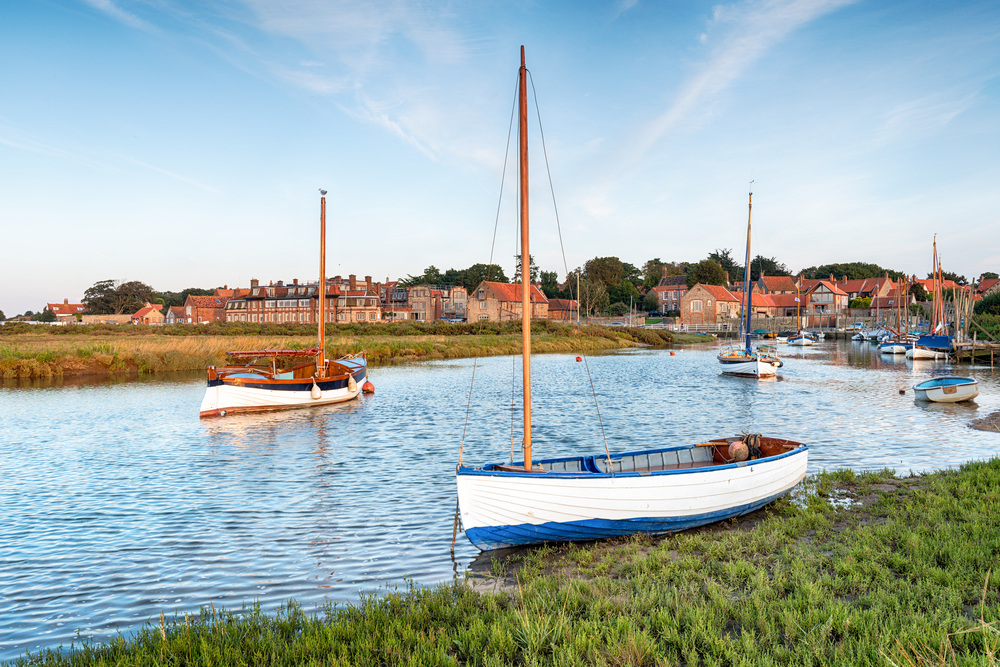
When visiting Blakeney, be sure to take advantage of the area’s coastal walks. Hikers and outdoor enthusiasts flock to this sleepy seaside village because of the expansive wetlands that look like something out of Great Expectations, as well as the abundance of wildlife.
The core of England’s first coastal wildlife sanctuary, Blakeney Point, is a great place to seal watching from a boat. At the same time, Blakeney Freshes is a great place to look for unique sea birds and enjoy the reserve’s incredible scenery.
8. Tintagel, England
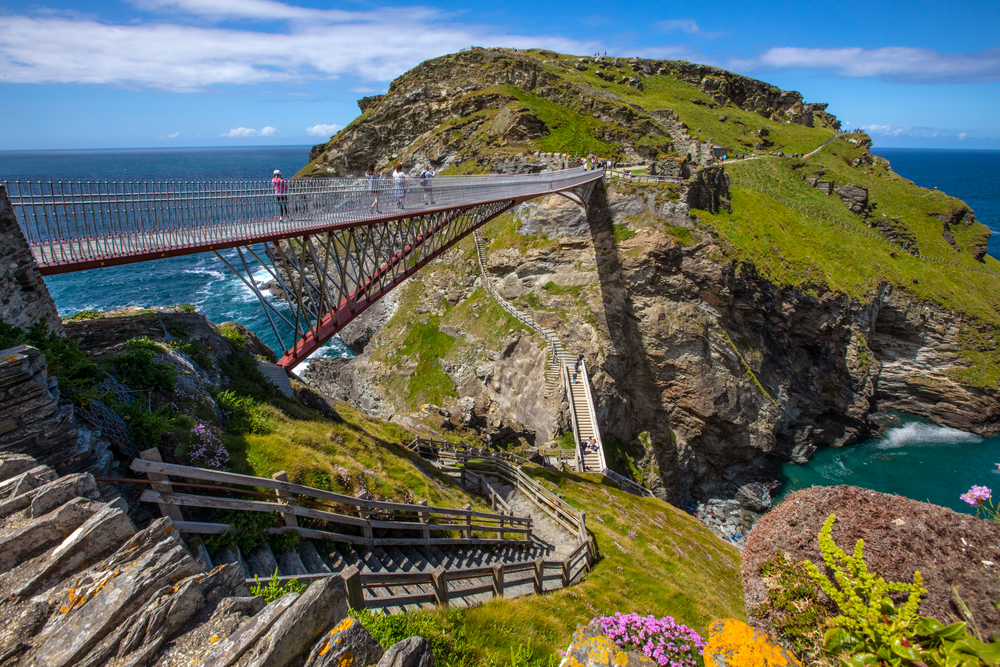
This Cornish town is world-renowned for being the (alleged) location of King Arthur’s stronghold, Tintagel Castle, and the castle ruins are a destination in themselves.
They are set just outside town on an uneven assortment of typical Cornish cliffs. Therefore, wandering around this cinematic landscape with the legend of King Arthur in mind is simply dreamy.
Back up the hill in town are a famous fudge shop, the Old Post Office (a beautiful 14th-century building), Cornish pastry eateries, fish and chips spots, and pubs.
9. Rye, England
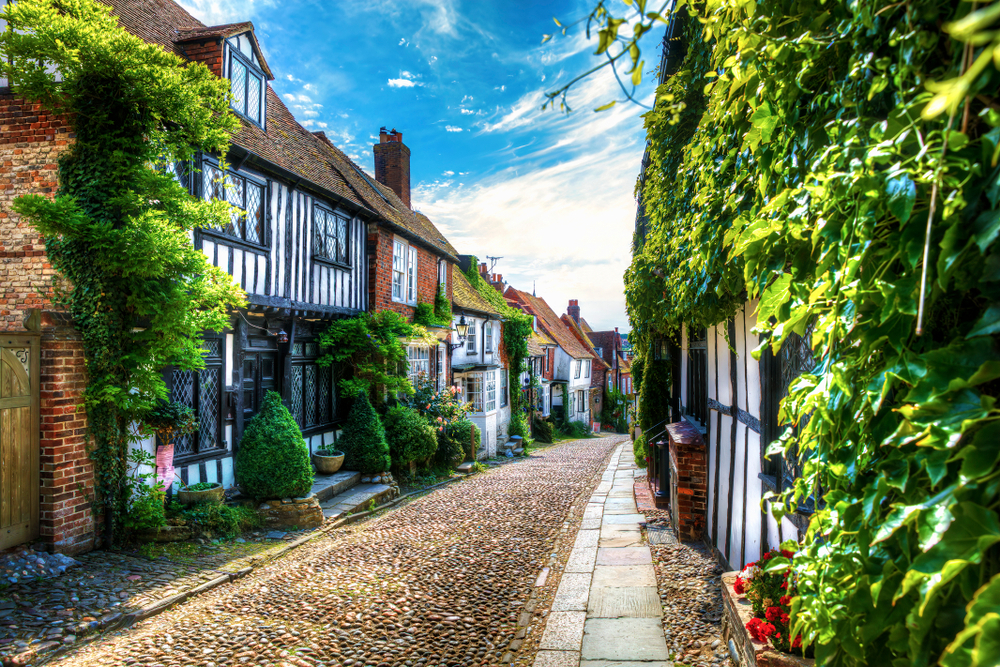
It’s hard to get sick of walking through cobblestone streets here, especially with its stretch of charmingly uneven cottages. An hour and a half west of Brighton, Rye is both peaceful and picturesque. This protected hilltop village extends extraordinary views to visitors and locals alike.
You can begin an exploration of the village on Mermaid Street, making sure to take in the 15th-century timber-framed houses. Wander down one of many secret passages before finding your way to Simon the Pieman for the most delicious scone (with cream and jam, of course).
Next, you’ll want to take in the shops. Although peppered with a few chain stores, Rye is better known for its vintage and eclectic shops selling everything from books to antiques.
10. Lynton and Lynmouth, England

It’s two-for-one here with Lynton looking down on the harbor village of Lynmouth. Set in dramatic Exmoor, you’ll find the Valley of the Rocks nearby. The setting is a twisting landscape of ancient geology and Glen Lyn Gorge, a magical slice of nature.
It’s like walking through a fantasy novel. The towns connect via the Lynmouth Cliff Railway, which opened in 1890. It’s a funicular that operates through hydropower and offers an entertaining means to fully capture the rocky North Devon coastal area.
11. Windsor, England
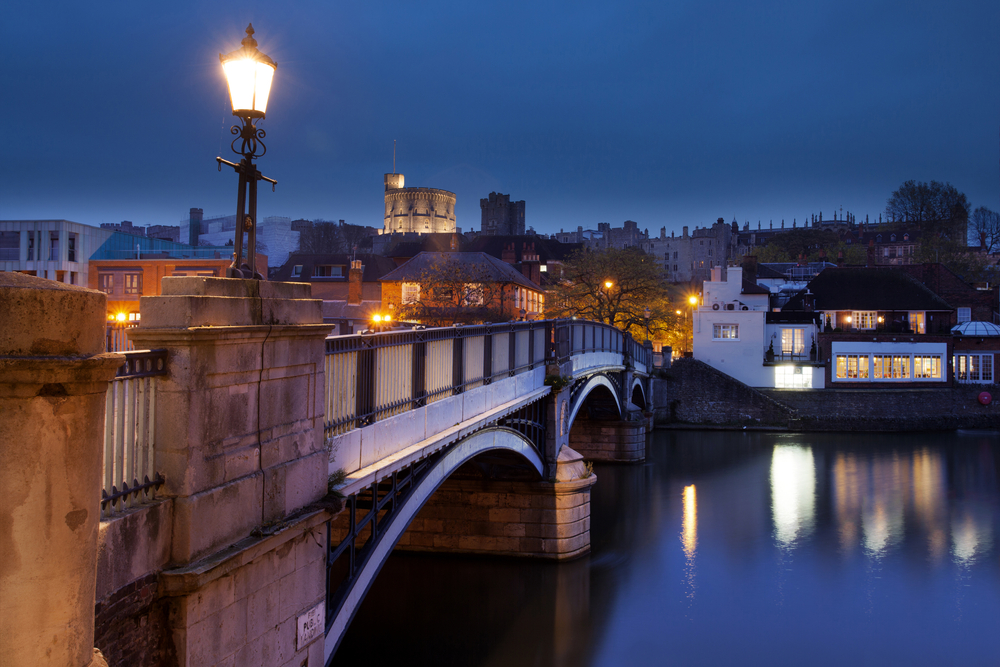
While it received fame because of Prince Harry and Meghan Markle (and as the backdrop for their first photo with baby Archie), Windsor has been a popular tourist destination for centuries.
Windsor Castle is the main reason that people flock here and is the vastest castle that remains occupied anywhere across the globe. It is also the place where the Queen often goes on vacation or for a weekend away.
The famed St. George’s chapel is also right here in Windsor. To get to it, you must walk up a pretty, winding street lined with shops. Living here is like living a royal life, and it is excellent for families.
You will discover delicious fudge here, so dip into the stores and try a bite. Be prepared to wait in line when you reach the castle, as the security and check-in processes take a while.
England is well-known for its spectacular gardens (there has to be an upside to all that rain), and Windsor won’t disappoint. In addition to the phenomenal castle grounds, the town boasts Windsor Great Park.
Head south from the castle to be rewarded by the 2.65-mile Long Walk flanked by trees. Inside, you’ll come upon Saville Garden. The highlight here is a rose garden best seen from an elevated walkway, which has been around since the mid-1900s.
Nearby tourist attractions include Legoland (a popular spot for ride-loving families) and the Ascot racecourse.
12. Shaftesbury, England
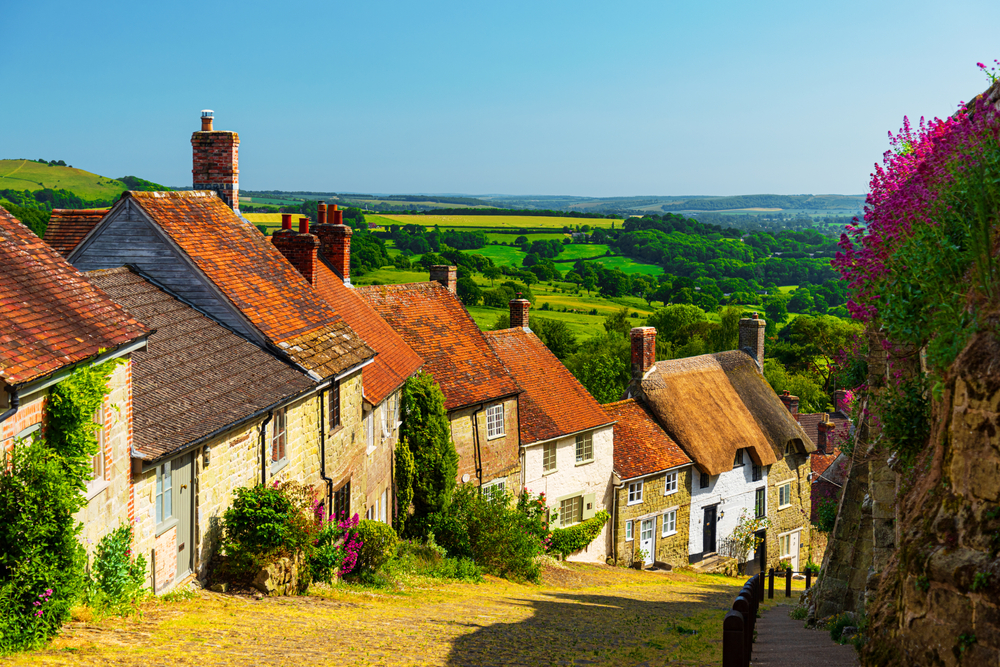
This Dorset town is a definite charmer. One of its streets, Gold Hill, was featured in the iconic “Boy on Bike” TV advert directed by Ridley Scott for Hovis. The steep, cobbled street has a line of rustic cottages on a backdrop of the lush English countryside.
They’ve dubbed it “one of the most romantic sights in England.” Adjacent to this picturesque street is the ruins of Shaftesbury Abbey, built-in 888 AD by King Alfred.
13. Clovelly Devon, England
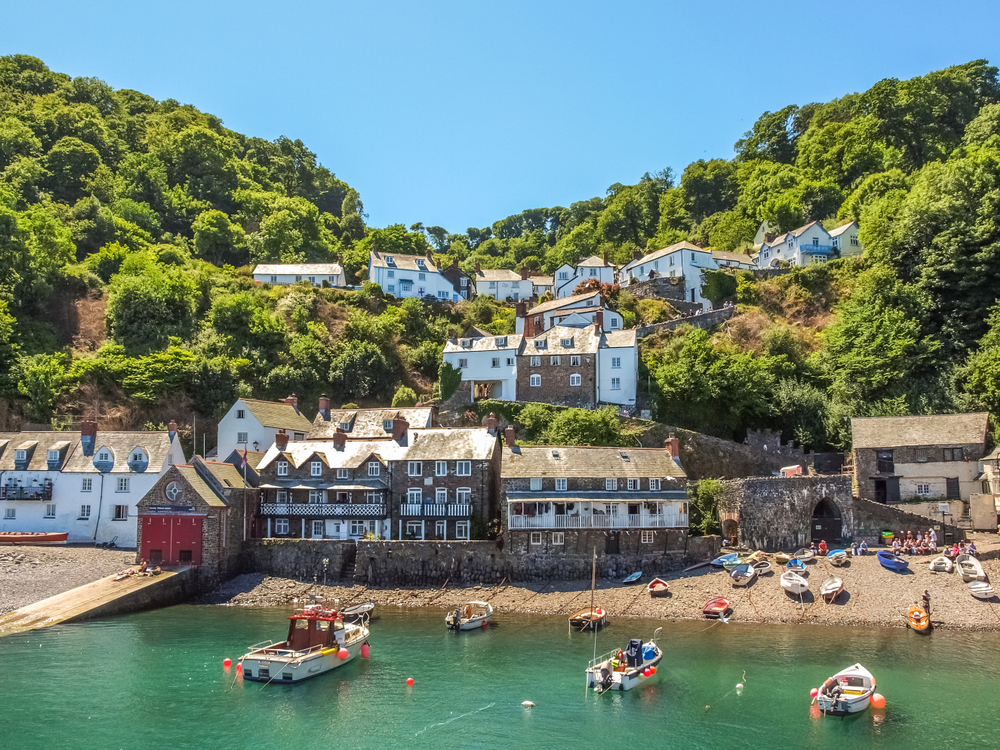
This town’s beauty is unfathomable. Small, flower-decorated white cottages line the narrow, cobbled streets. They’re positively dripping with charisma.
The village sits inside a 400-foot cliff, which drops to an ancient port below. The harbor is still in use today despite its being constructed in the fourteenth century.
The most exciting part is that no cars are allowed in this quaint town, so visitors will have to share the road with donkeys and sleds instead.
Those who want to relax should make a point of spending the night in this serene haven. Additionally, if you choose to stay local, you will not be charged an entrance fee.
Parking, a village heritage feature film, two exhibitions, and availability to the Clovelly Court Gardens are all included in the admission price of $10.
Although the roadways involve a steep ascent, the view at the pinnacle makes the trip worthwhile, even if they are difficult for some.
14. Upper and Lower Slaughter, England
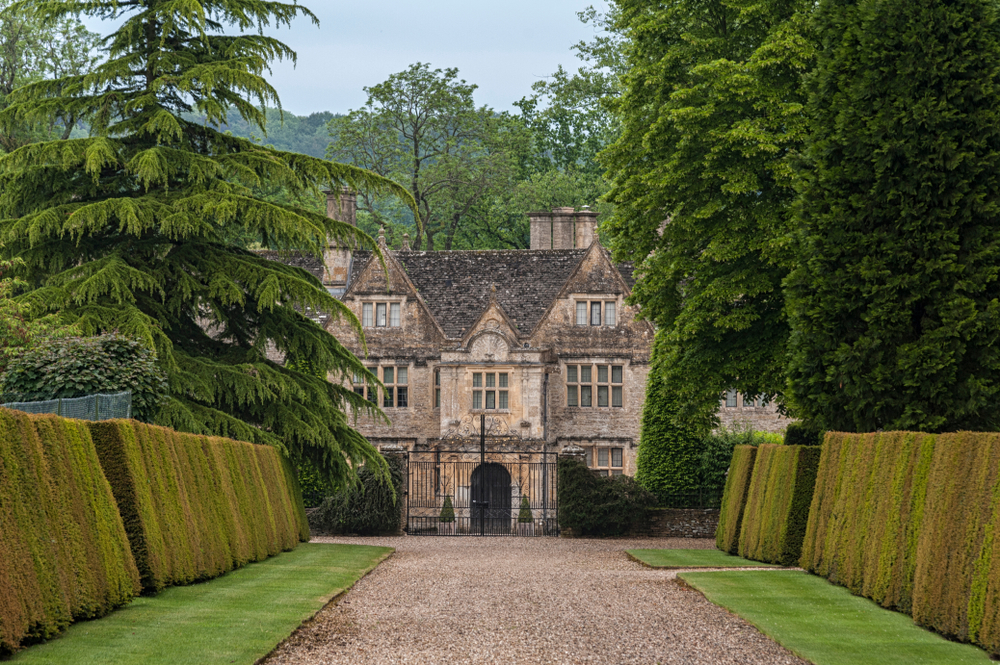
Don’t let the name fool you, as this lovely village has so much to offer! Slohtre translates as “muddy place” in Old English, even though the area is anything but muddy in modern times.
It’s hard to imagine a more pastoral, chocolate-box-Cotswolds setting than these two teeny towns.
An easy walk along with the River Eye, which connects the two towns, takes you through idyllic riverside scenery and past the appropriately named Old Mill, which dates back to the 14th century.
15. St. Ives, England

This charming seaside town used to be a small fishing community. It has, nevertheless, gained notoriety as a prominent tourist resort over time.
This town has received many awards for its pristine harbor and soft, white-sand beaches, making it the best seaside town, family vacation destination, and beach in England.
Fishermen’s cottages and eclectic shops, as well as narrow, winding cobbled streets, add to the quaintness.
This hotspot in Cornwall is ideal for those who enjoy the water and the sun, as it has several sheltered coves where you can go swimming with ease. At Porthmeor Beach, you can ride the waves on a surfboard, rent a windsurfer, or go water skiing.
Take a stroll along the shoreline while you’re there. Time permitting, stop by the stunning Tate St. Ives, an incredible art museum with breathtaking scenery of the Atlantic Ocean.
Because St. Ives is a famous British vacation destination, make your hotel reservations as far in advance as possible.
16. Lavenham, Suffolk
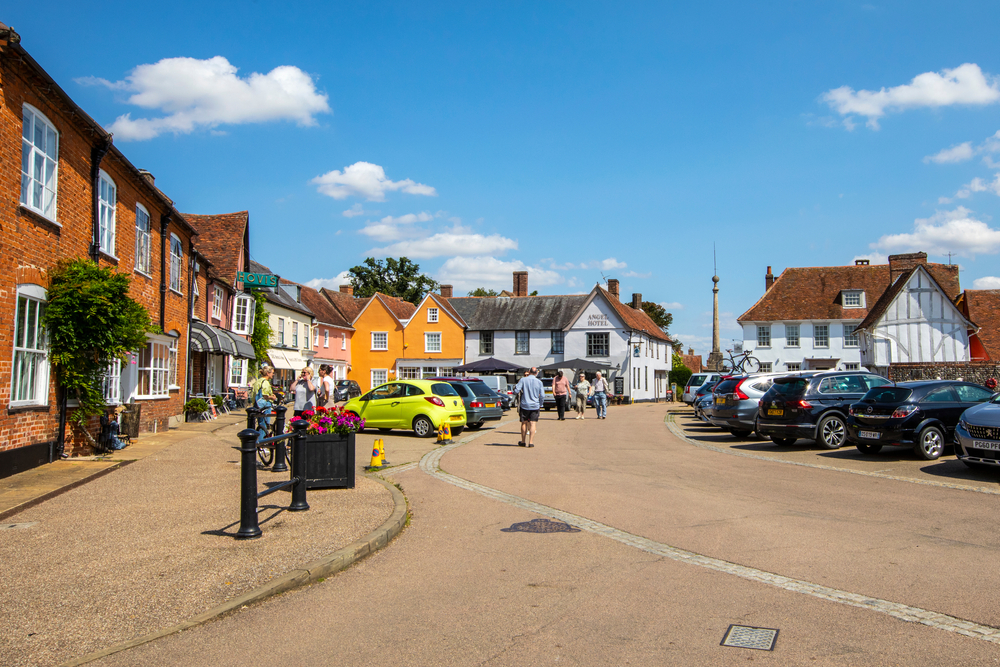
Medieval buildings in Lavenham lean as if they were relics of a bygone age. The town used to be known for its wool and was one of the wealthiest in Britain, but wool shipments from Europe became inexpensive, and the village began to deteriorate.
As if from a storybook, dozens of half-timbered structures now tell the city’s history while also serving as restaurants and lodging options. The Lavenham Guildhall’s Tudor tearoom, one of the best surviving examples of the town’s heyday, is open for tea service.
17. Warwickshire, England
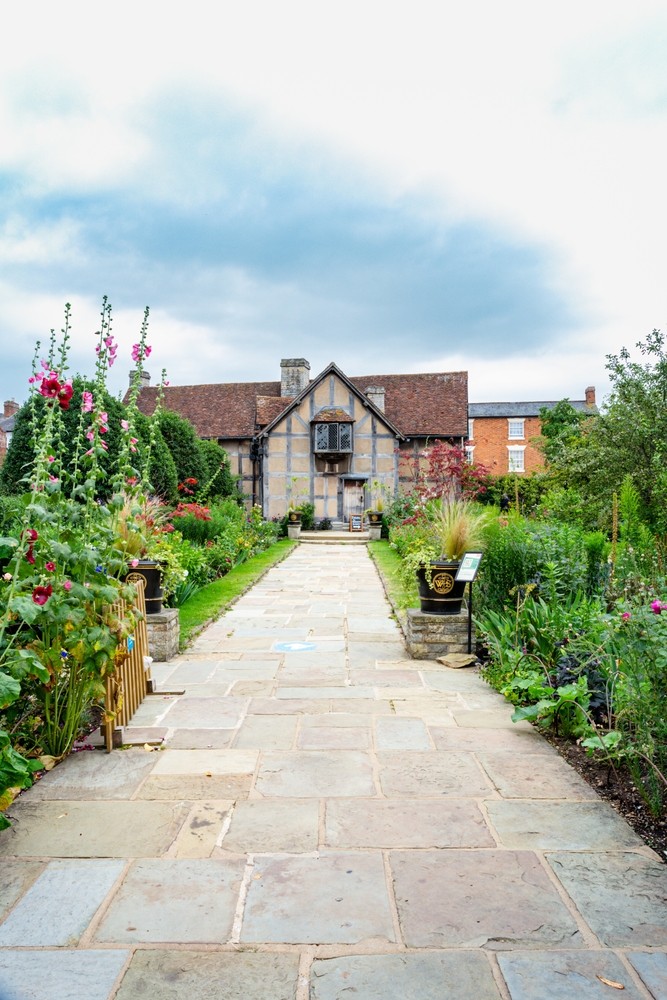
This charming town on the banks of the River Avon is a historical treasure trove. Begin with a visit to Lucy’s ancestral home, Charlecote Park, a stately Victorian mansion. Visit the library, which is a popular stop for visitors, and other rooms that are available for exploration in addition to the expansive grounds.
As with all English castles, this one exudes impeccable charm while also being exceptionally well preserved. Horrible Histories fans will delight in the museum’s connection to the series.
It allows children to interact with historical figures and view displays about topics they never knew they needed to learn. Falconer’s Quest, a fascinating show featuring game birds, and a 3D interactive exercise path are also on hand.
Another must-see location is the Lord Leycester Hospital (short for hospitality). Veterans live in this lovely spot, which serves as a living museum. In comparison to Warwick Castle, it is less expensive and features a tearoom with delectable snacks.
Warwick Castle provides glamping on its premises to its visitors, who also get priority access to the castle and late afternoon “knight school.” You’ll dine in a middle-aged-era dining hall after sleeping in a comfortable canvas tent.
18. Beer, England
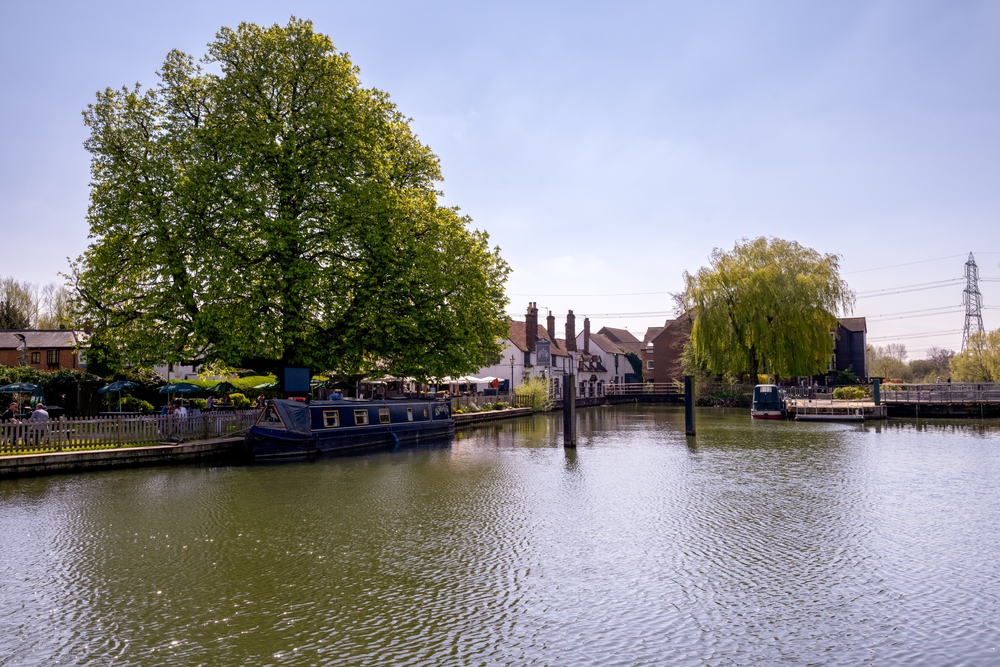
The name Beer comes from the Old English word bearu, which means grove. Despite this, this seaside town has a higher proportion of pubs supplying excellent quality ales and crab, the latter of which is a specialty.
Hooken Cliffs, west of the village, offers a meandering hike on which you can imagine yourself as a peddler from long ago.
Its 2,000-year-old Beer Quarry Caves, just outside of town, is famous for their ‘beer stone,’ a fine-textured sedimentary rock used in Westminster Abbey and some other locations.
Visiting Beer’s pebble beach with an ice cream in hand after a pub lunch exemplifies the best of English summer vacations.
19. Lyndhurst, England
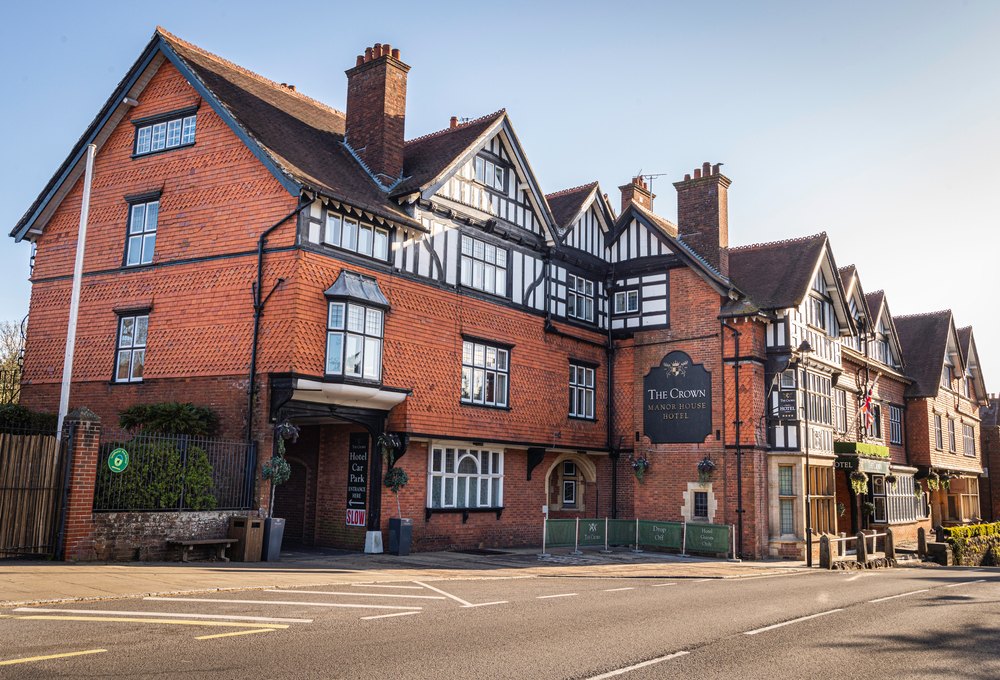
Lyndhurst, Britain’s New Forest treasure, is tucked away in the middle of the woods. In 1079, William the Conqueror made it a royal hunting ground.
People who want to stay overnight in The New Forest without pitching a tent can do so today.
Lyndhurst is a great place to go biking, running, or just strolling through the woods. Be cautious and don’t approach the wild animals, as they are allowed to roam freely in this area.
There are a lot of unique stores and local restaurants in the city. The delightful Peggy May’s café provides a classic British encounter, while Tasty Pastries provides freshly made snacks and Cornish desserts.
Two handmade scones, thickened cream, and tea make up the Forest Cream Teas winning combination, and Lyndhurst’s Parish Church, St. Michael, and All Angels are a must-see.
The church’s beautiful stained-glass windows attract some visitors, but most visit the cemetery to look for a grave. Alice Hargreaves, the woman who motivated Lewis Carroll’s Alice in Wonderland, has been laid to rest in this plot.
20. Henley-on-Thames, England
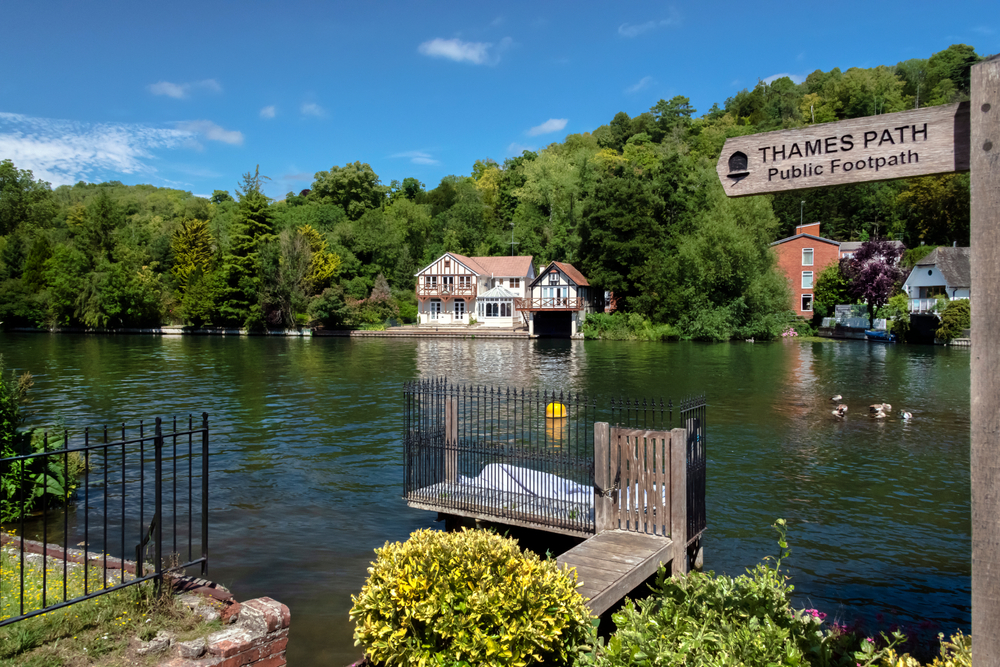
Home to the renowned July boat race, the Henley Royal Regatta, this lovely location was founded as a market town back in the 12th century and has attracted thousands of visitors every year.
It’s a must to walk the Thames Path National Trail. From Marsh Lock, it goes all the way to Hambleden Lock. Get out on Henley’s central focus water by renting a canoe instead.
As one of the world’s top museums, the River & Rowing Museum in Henley-on-Thames has received high praise. It concentrates on paddling as a global sport as well as the river.
Going to Grey’s Court is also a good experience. A visit to this National Trust house during the spring, when the bluebells and wisteria are in full bloom, will be well worth your time despite its diminutive stature.
21. Bourton-on-the-Water, England
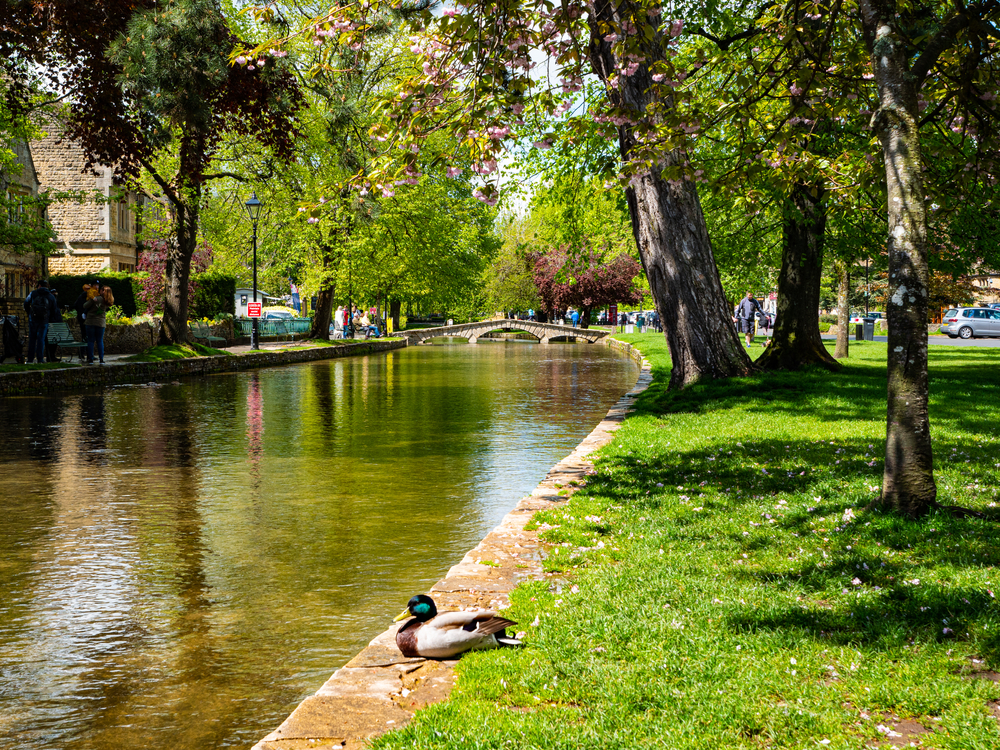
Bourton-on-the-Water is a must-see on an excursion to the Cotswolds. It got nicknamed the “Venice of the Cotswolds” because of the numerous low, arched stone bridges spanning the River Windrush.
Stores offering it all from vintage items to teacups to apparel line the streets of the city. Eateries abound in Green & Pleasant, which serves tasty meals and lemon pie in addition to being gluten-free.
For car buffs, a visit to the Cotswold Motoring Museum is a must. The establishment’s witty, straightforward, and humorous characterizations make learning about vintage cars a pleasure. As you can see from the outside, this place is much larger than it appears.
An enjoyable way to spend quality time is to explore the Dragonfly Maze. To discover the dragonfly, individuals must answer the hints (and navigate the riddles) – but don’t fret. The delightful woman in charge can assist you if you run into problems.
Brace yourselves, bird enthusiasts, for Birdland. This nine-acre garden and woodlands are home to over 500 of our feathered friends. The Flamingo Point Café is a great place to meet the flamingos and learn more about them.
22. Avebury, England

Even though the protected Stonehenge is not fully accessible, you can certainly get many photographs of it. Historians estimate that the henge was built between 2850 and 2200 BC and surrounds a portion of Avebury.
You can find an enormous stone circle in the United Kingdom on the grounds of this National Trust property.
If you choose to get up close with the magnificent stones, be willing to wear appropriate footwear because the terrain is frequently soggy and dangerous.
Because the village is so tiny and is only an hour’s drive away from Salisbury, home to Salisbury Cathedral and the Magna Carta, it’s best to just make this a day trip.
23. Dedham, England
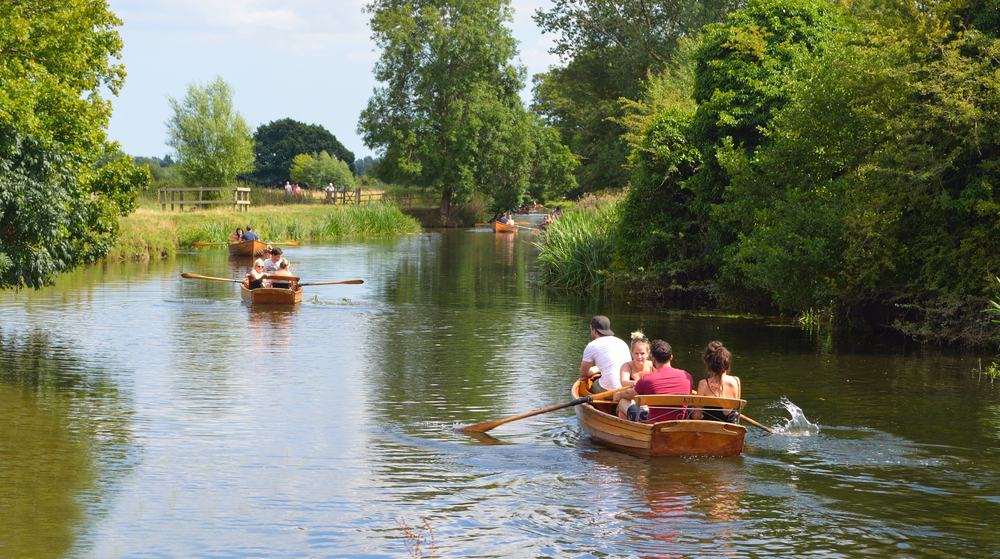
John Constable, the UK’s finest scenery artist, was influenced by this charming village. You’ll see why once you get there. Dedham is a picturesque town with Georgian-style frontages. Visitors are transported to a serene location by the surrounding countryside.
The area’s water meadows are perhaps its most beloved feature, drawing artists, photographers, hikers, and other outdoor enthusiasts in droves.
At Munnings Art Museum, housed in Castle House, you’ll see the work of Sir Alfred Munnings, another local artist. He, too, was taken aback by the area’s natural beauty.
Visit the local Flatford Mill by watercraft on the River Stour. Visit the John Constable Showcase in Bridge Cottage while you’re at it, and then go for a stroll through the countryside in his tracks.
24. Alfriston, England
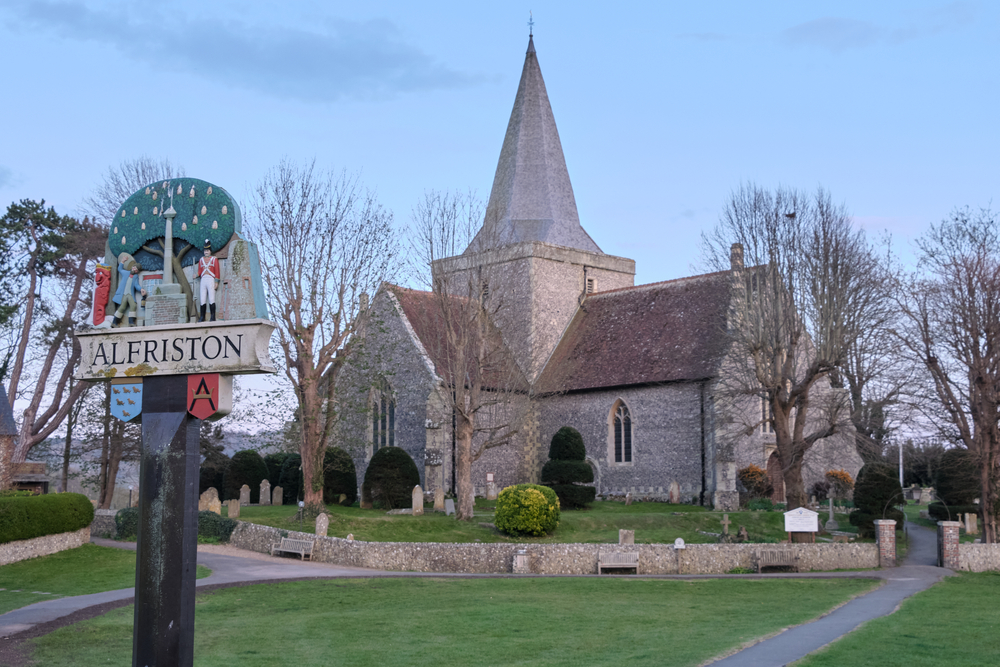
Year-round, visitors throng to South Downs National Park. Beautiful scenery, like rolling hills, ancient forests, and quaint villages, is a big part of why people flock to this area. The Seven Sisters, a group of towering white cliffs, is another popular attraction in the park.
Tourists frequently look for a place to rest and relax after traveling across so much ground. Alfriston, which is close by, is the ideal location. It’s impossible to get bored in this small town because of the abundance of charming shops and galleries.
The Cathedral of the South Downs (also known as St. Andrews Church) is another must-see. It dates back to 1360 and sits on the village green (Tye) near the Cuckmere River.
The Alfriston Clergy House, a Wealden hall-house with a roof and timber frame, is also located in this cross-shaped town. Because it’s only open from March to December, you’ll want to be strategic about when you go.
25. Whitstable, England
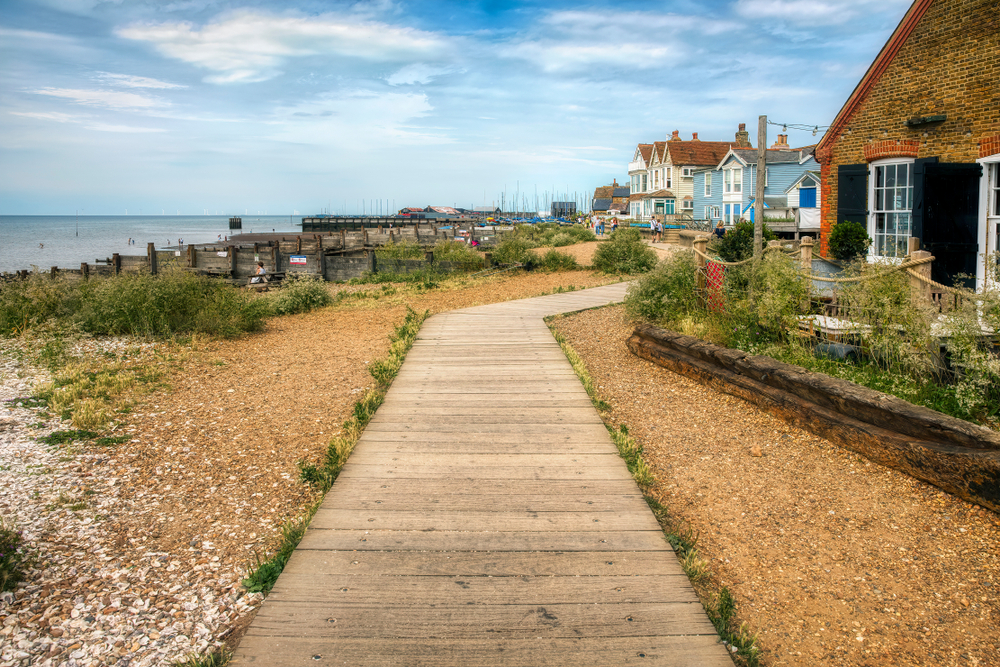
There’s no better place to unwind than this sleepy, seaside hamlet. Book a nearby hotel in Canterbury, only five miles away, if you want to spend the entire day here.
Whitstable is well-known for its brightly painted homes and quaint fishing shacks along the quayside. As you stroll along the sand, you’ll come face to face with a slew of fishing boats eagerly anticipating their next haul.
Whitstable Harbour is a lot of fun to explore. On a hot, sunny day, it’s crowded with tourists in bathing suits who are taking advantage of the lovely temperatures.
Inflatable rafts and baby clothes are among the many items for sale in the colorful beach sheds that line the harbor, but the best reason to go to this waterfront gem is to eat seafood. After all, it was just unloaded from a boat and is served hot and fresh.
When you walk along the path that leads to Herne Bay from Tankerton Slopes, you’ll have stunning views of the sea and the Kent coast. Tankerton Beach, located below the Slopes, is a lovely shingled beach best enjoyed with shoes on.
26. Burford, England
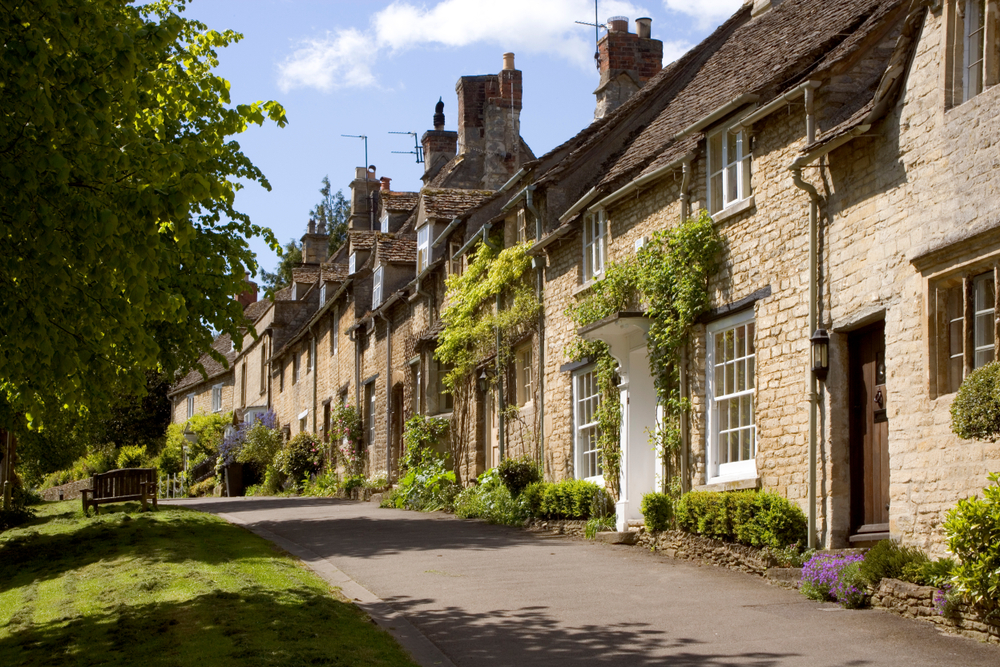
This adorable village, which is about 30 kilometers west of Oxford, is a photographer’s dream.
Thatched-roof houses and Cotswold stone cottages coexist alongside Georgian architecture. As well as inns and restaurants, the town’s main street has many quirky shops and tearooms of all kinds.
It has a steep incline toward the River Windrush, providing shoppers with some of the most picturesque scenery. As long as you’re in town, make sure you pay a visit to Saint John the Baptist Church.
Every year, more than a hundred thousand people pay their respects at this historic site, constructed sometime before the 1500s.
Visit the nearby Cotswold Wildlife Park & Gardens if you’re traveling with children. In this 160-acre parkland, you can get up close and personal with giraffes, porcupines, and lions.
27. Weymouth, England
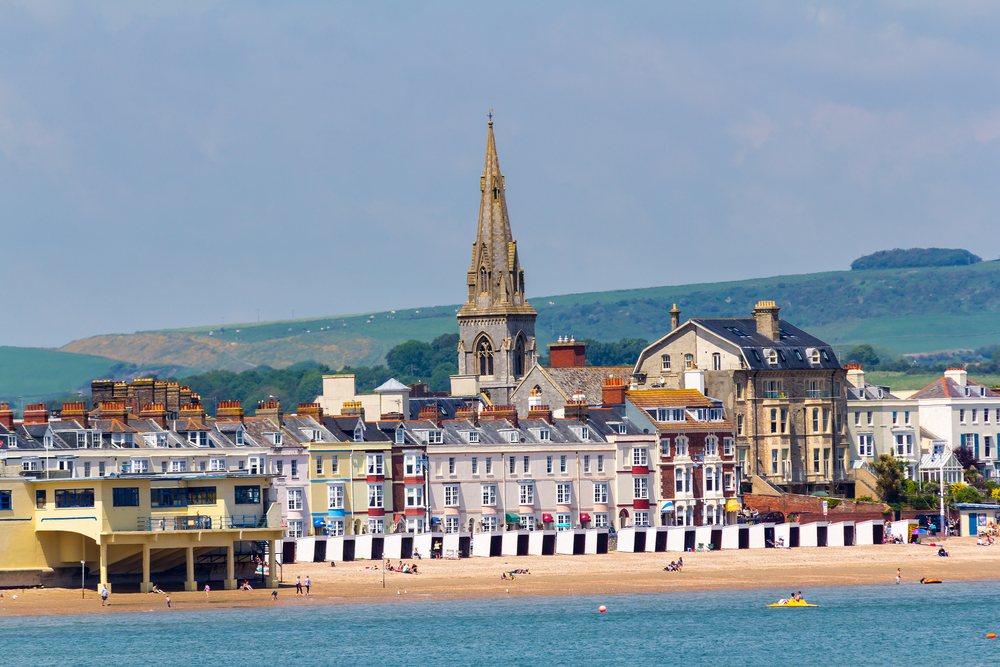
Weymouth, a seaside resort town, is located right in the heart of the Jurassic Coast, a UNESCO World Heritage Site whose craggy cliffs date back to the Jurassic Period.
The pebbly Chesil Beach, the setting for Ian McEwan’s acclaimed novel of the same name, is undoubtedly the most photogenic location in the area.
28. Ballintoy, Northern Ireland
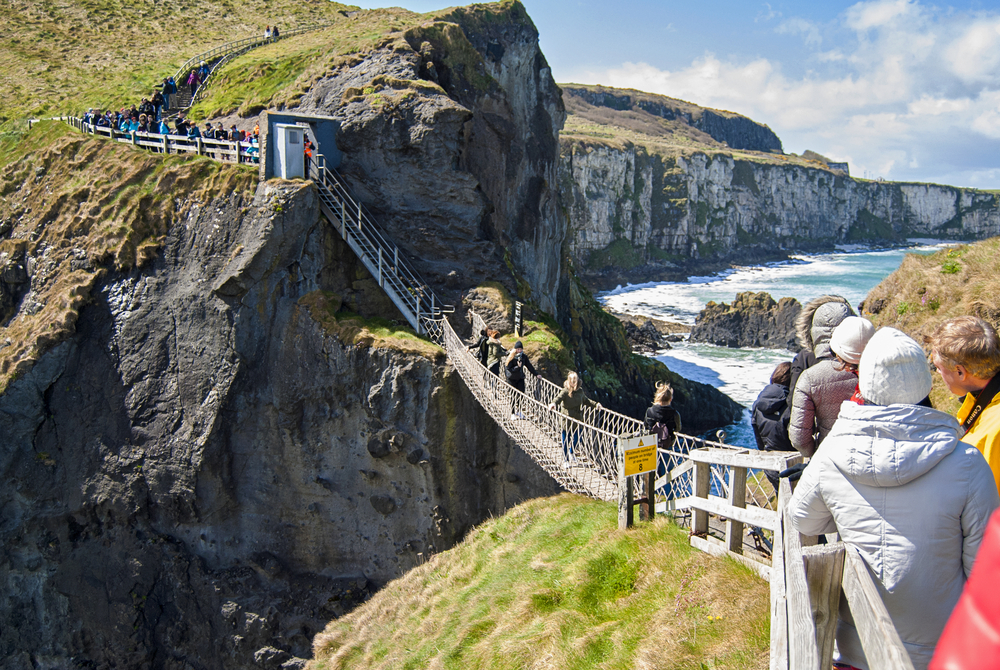
An idyllic harbor town, Ballintoy is near the famous Giant’s Causeway and the Carrick-a-rede rope bridge.
It’s also home to an elegant white church on a hill overlooking the village, formerly utilized as a location for Game of Thrones filming.
Ignore the bustle of the harbor and head over to the friendly, beautiful, and picturesque swimming and picnic areas.
29. Crail, Scotland
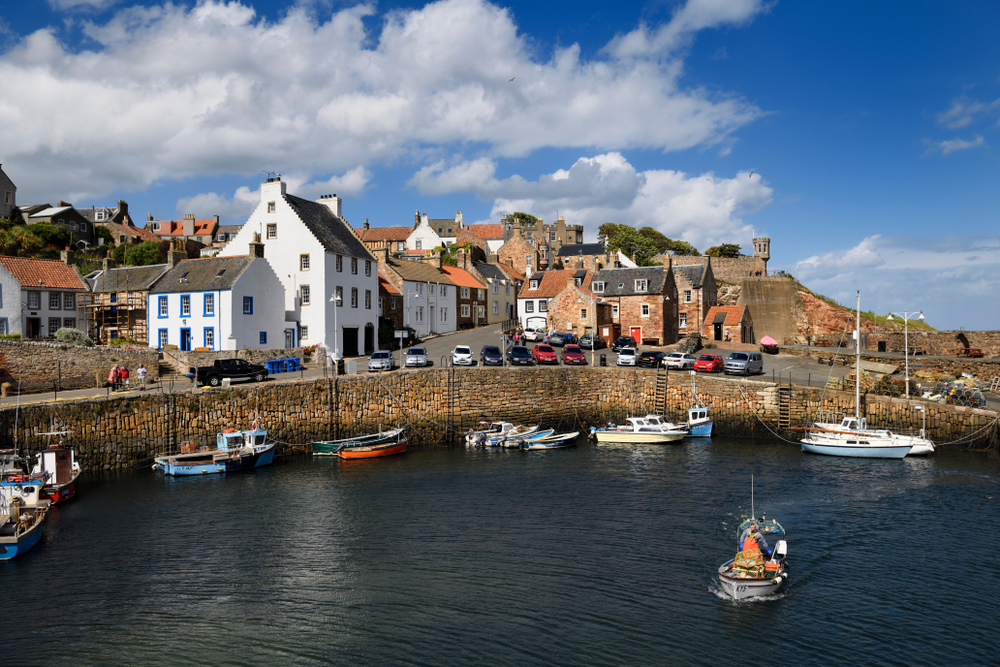
Historic Crail is tucked away on the coast of Scotland and only an hour and a half away from Edinburgh.
However, Crail feels like it’s from an ancient era, with fishers setting out to sea early in the morning and returning home late at night on the cobblestone streets.
Many beloved buildings, such as the stone tollbooth that dates back to the 16th century, are in this town, whose first settlement was built around 800.
30. Bowness-on-Windermere, England
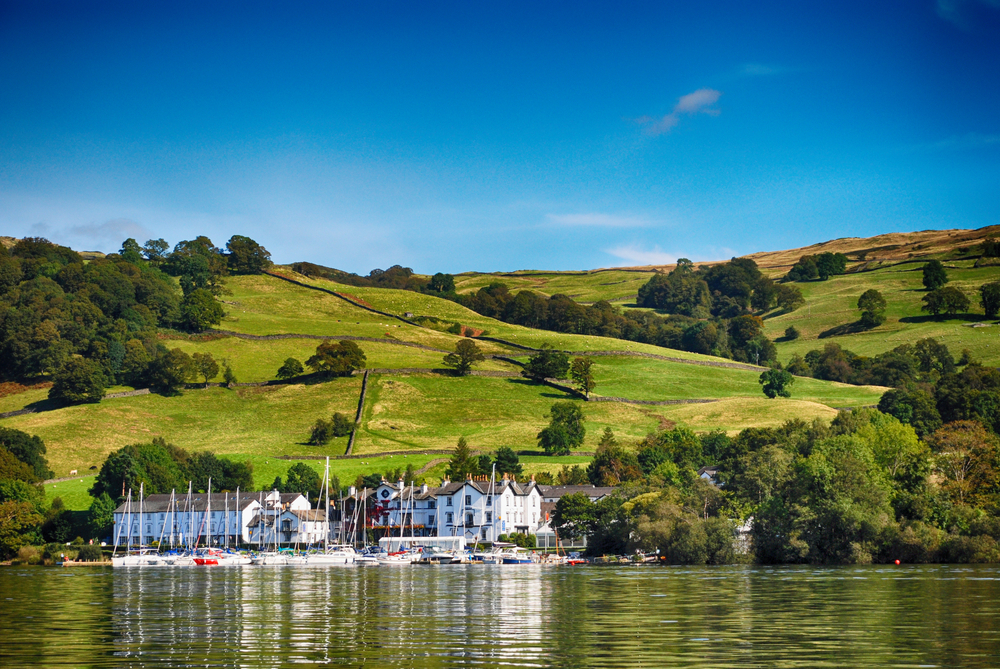
The World of Beatrix Potter Attraction and the rustic lakeside setting make this Lake District town a must-see for visitors. The town has many cafes, and you can park for free in many places or choose one of the more affordable options.
You can also jump on a ferry here to check out other towns along the lake. If you’re not scared of the water and would like to have your own, renting a kayak or canoe is also an option.
The town became a major draw for tourists after a railway line from Kendal was built in the nineteenth century. There are 14 islands here in England’s largest lake, which a variety of watercraft can explore.






